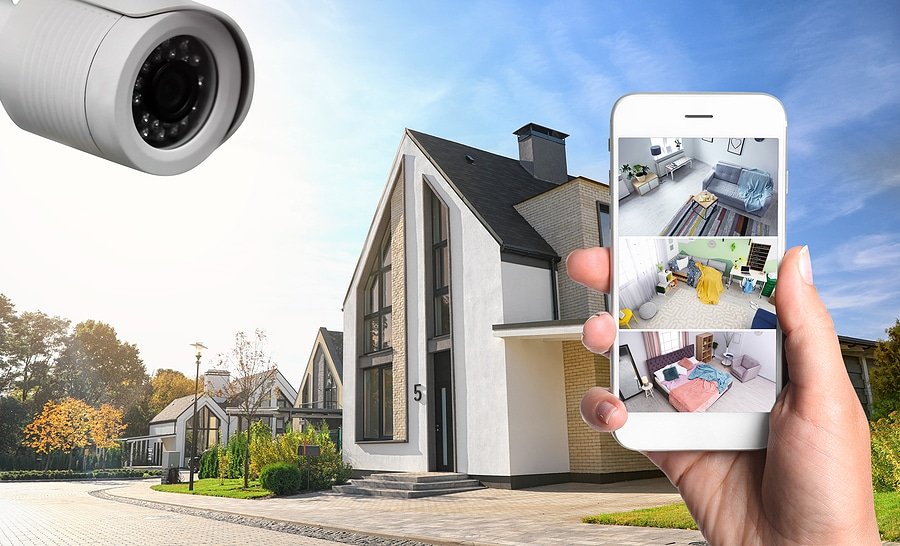In the realm of home security, few features are as effective and versatile as outdoor security lighting. Not only does it enhance the aesthetics of your property, but it also serves as a powerful deterrent against intruders and enhances visibility during nighttime. In this guide, we’ll explore the various types of outdoor security lighting, optimal placement strategies, and the numerous benefits it brings to bolster home safety.
Home security is a top priority for homeowners everywhere. We all want to feel safe and secure in our own homes, and one of the most effective ways to enhance security is through outdoor security lighting. In this guide, we’ll explore the ins and outs of outdoor security lighting, from understanding its benefits to choosing the right type and placement for your home.
Understanding Outdoor Security Lighting
Definition and Purpose
Outdoor security lighting is designed to illuminate the exterior areas of your home, deterring potential intruders and enhancing visibility. It serves as both a preventative measure against crime and a practical solution for navigating your property at night.
Benefits of Outdoor Security Lighting
- Deterrence: Well-lit properties are less attractive to burglars.
- Visibility: Improved visibility reduces the risk of accidents and makes it easier to identify visitors.
- Peace of Mind: Knowing your home is well-lit provides a sense of security.
Types of Outdoor Security Lighting
Motion Sensor Lights
These lights activate when motion is detected, startling intruders and alerting homeowners to potential threats. They’re energy-efficient since they only light up when needed.
Floodlights
Floodlights provide broad, intense illumination, covering large areas. They’re ideal for driveways, backyards, and other open spaces.
Solar-Powered Lights
Harnessing solar energy, these lights are eco-friendly and cost-effective. They require minimal maintenance and are great for areas with ample sunlight.
Smart Security Lights
Smart lights can be controlled via smartphone apps, integrated with home security systems, and set on schedules or timers. They offer convenience and advanced security features.
Choosing the Right Outdoor Security Lighting
Assessing Your Home’s Needs
Start by evaluating the specific needs of your property. Consider factors such as the size of your yard, the number of entry points, and areas that require the most illumination.
Considering the Environment
Choose lighting that complements your environment. For instance, in a densely populated area, you might need more focused lighting, while rural areas might benefit from broader coverage.
Energy Efficiency
Opt for LED lights or solar-powered options to save on energy costs and reduce your environmental footprint.
Placement of Outdoor Security Lighting
Entry Points
Install lights at all entry points, including doors and windows, to deter unauthorized access.
Pathways and Walkways
Ensure pathways and walkways are well-lit to prevent accidents and guide visitors safely to your door.
Backyards and Gardens
Illuminate your backyard and garden areas to deter intruders and allow for safe nighttime use.
Garage and Driveway
Position lights near your garage and driveway to improve visibility when parking and deter car thefts.
Installation Tips for Outdoor Security Lighting
DIY vs. Professional Installation
While DIY installation can save money, professional installation ensures proper placement and electrical safety.
Electrical Safety Considerations
Always follow electrical safety guidelines. If you’re unsure, hire a professional to avoid hazards.
Weatherproofing and Maintenance
Choose weatherproof lights and regularly check them for maintenance to ensure they function correctly year-round.
Enhancing Security with Outdoor Lighting
Integrating with Home Security Systems
Sync your lights with your home security system for coordinated protection. This integration can provide alerts and additional security features.
Using Timers and Smart Controls
Timers and smart controls allow you to automate your lighting, making it appear as though someone is home even when you’re away.
Deterring Potential Intruders
Strategically placed lights can create the illusion of occupancy and scare off potential intruders.
Common Mistakes to Avoid
Over-Illuminating Your Property
Too much light can be as problematic as too little. It can create glare and annoy neighbors. Aim for balanced, strategic lighting.
Ignoring Blind Spots
Ensure there are no dark corners or blind spots where intruders can hide. Walk around your property at night to identify these areas.
Not Maintaining the Lights
Regularly check and maintain your lights to ensure they’re in working order. Replace bulbs and fix any wiring issues promptly.
Case Studies and Real-Life Examples
Successful Implementations
Consider homes that have successfully used outdoor lighting to enhance security. Learning from these examples can provide valuable insights.
Lessons Learned from Failures
Analyze instances where lighting failed to deter intruders. Understanding what went wrong can help you avoid similar mistakes.
Future Trends in Outdoor Security Lighting
Advancements in Technology
Stay informed about the latest advancements in security lighting technology, such as improved motion sensors and smart home integrations.
Sustainable Lighting Solutions
Explore sustainable options like solar-powered lights and energy-efficient LEDs to reduce your carbon footprint and save on energy costs.
Conclusion
Outdoor security lighting is a crucial component of home security. By choosing the right types of lights, placing them strategically, and maintaining them properly, you can significantly enhance your home’s safety. As a fundamental component of any comprehensive home security system, offering a range of benefits that contribute to the safety, security, and aesthetics of your property. By understanding the different types of outdoor security lighting, implementing strategic placement strategies, and leveraging its numerous benefits, homeowners can create a safer and more secure living environment for themselves and their families.


